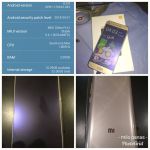Xiaomi Redmi 5
good for gamers and great price
If there’s a trend that has caught on like wildfire in the smartphone industry, then it’s full-screen display with thin bezels. There’s a strong case for it as the display becomes more vibrant and there’s minimal space around it. It wasn’t a surprise to see Xiaomi jump on this bandwagon of bezel-less smartphones. So far the company has introduced three smartphones with bezel-less display and the latest addition to its product portfolio is the Xiaomi Redmi 5. The smartphone is the successor of the last year’s launched Redmi 4 and one of the few to offer a bezel-less display. The smartphone is a worthy update as compared to the last year launched Redmi 4. It comes with a powerful efficient processor and vibrant bezel-less display which you will often find in. We used the Xiaomi Redmi 5 for some time to see whether it's worth the money or not.
Xiaomi Power Bank 10000mAh (Red)
cheaper and stay long
Portable power banks are far less sexy than the phones and tablets they connect to. Xiaomi Mi Power Bank Pro is genuinely attractive. The 10,000mAh backup battery is wrapped in a slim metal body that's both stylish and easily portable. In addition to providing lots of extra power in our tests, it supports fast charging and pass-through charging as well. That makes the Mi Power Bank Pro the best battery you can buy at this size and price, and our Editors' Choice.
The Mi Power Bank Pro features a cool, minimal design made of machined aluminum. It measures 5.1 by 2.9 by 0.5 inches (HWD), about the size of your average smartphone. The Anker PowerCore 10000 is smaller in length and width, but is nearly a full inch thick (3.9 by 2.5 by 0.9 inches), making it hard to fit in a pocket. And despite its higher-quality aluminum build, the Mi Power Bank Pro weighs the same 7 ounces as the polycarbonate PowerCore.


















Apple iPhone X
good camera and price too expensive
The iPhone X is intended to showcase what Apple considers technology of the future, specifically adopting OLED screen technology for the first time in iPhone history, as well as using a glass and stainless-steel form factor, offering wireless charging, and removing the home button in favor of introducing a new bezel-less design, almost removing all the bezels in the smartphone and not having a "chin", unlike many Android phones. It also released a new type of password authentication called Face ID. Face ID is a new authentication method using advanced technologies to scan the user's face to unlock the device, as well as for the use of animated emojis called Animoji. The new, nearly bezel-less form factor marks a significant change to the iPhone user interaction, involving swipe-based gestures to navigate around the operating system rather than the typical home button used in every previous iteration of the iPhone lineup. At the time of its November 2017 launch, its also made it the most expensive iPhone ever, with even higher prices internationally due to additional local sales and import taxes.
The iPhone X received mixed reviews. Its display and build quality were universally praised, and the camera also scored positively on tests. The phone received particularly polarized reception due to the sensor housing "notch" at the top of the screen and the introduction of an all-new authentication method. The notch was heavily mocked by users on social media, although app developers responded either neutrally or positively to the changes it brought to the user experience in their apps and games. Reviewers had mixed reactions, with some condemning it and others acknowledging it as unusual in the first moments of use before getting accustomed to its presence. Face ID facial recognition was praised for its simple setup, but criticized for requiring direct eyes on the screen, though that option can be disabled within the systems preferences.